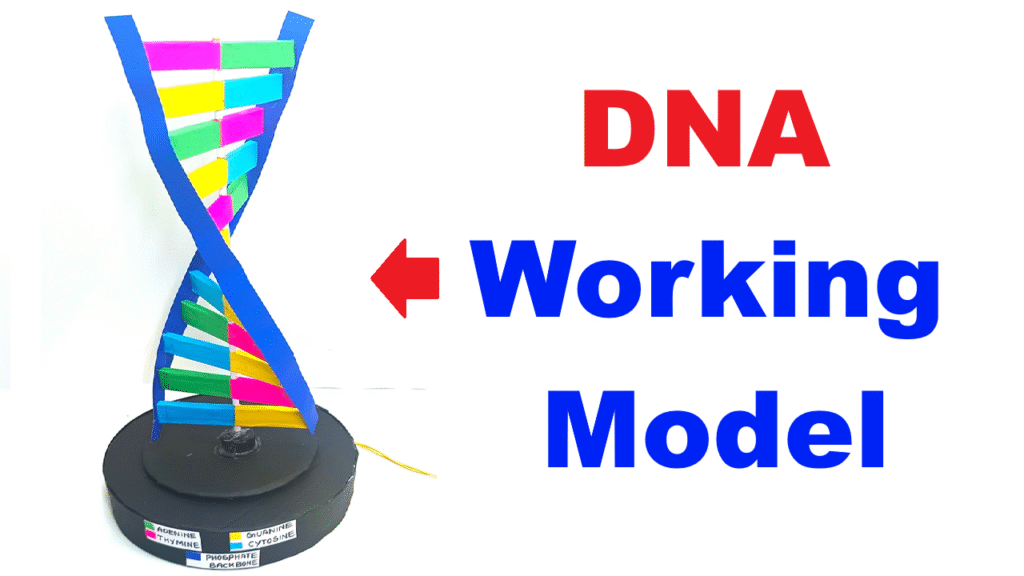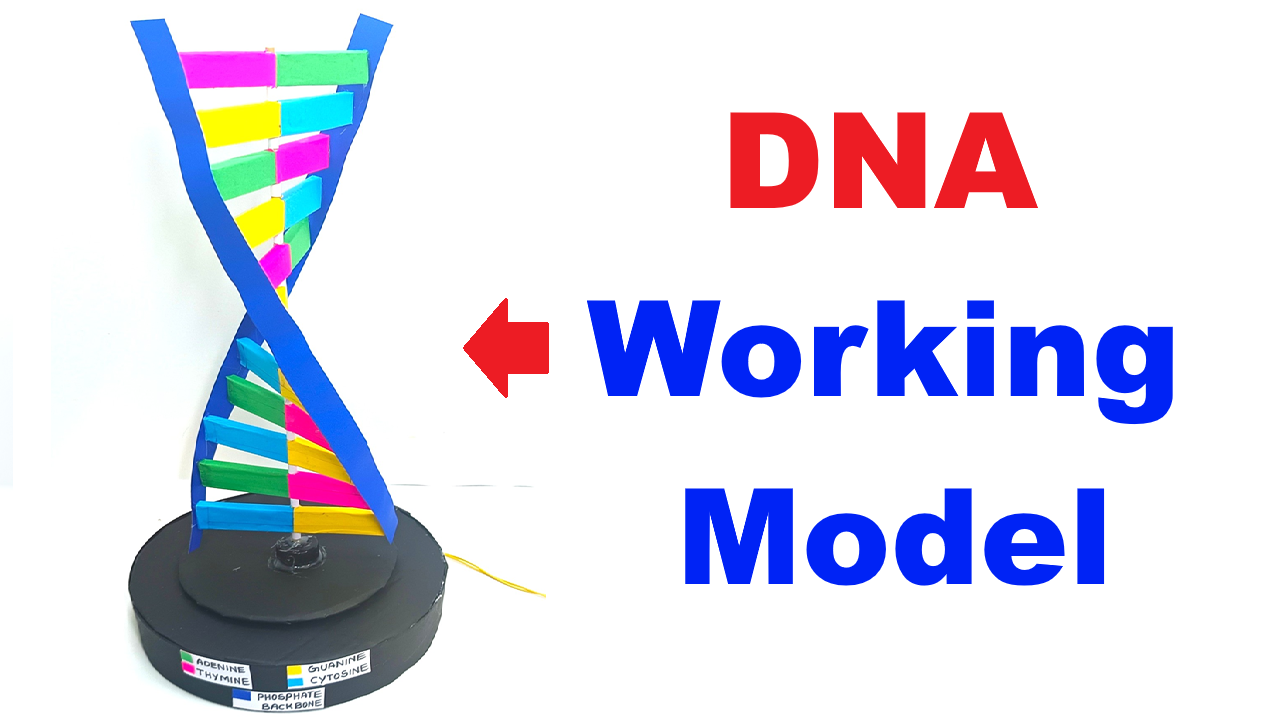Introduction
DNA, or Deoxyribonucleic Acid, is the molecule that carries the genetic information of all living organisms. It is structured like a double helix – two twisted strands connected by base pairs (A-T and G-C). For science exhibitions, creating a rotating DNA working model helps students visualize its structure and importance in heredity, cell functions, and biotechnology.

Materials Required
- Cardboard sheet (base and support stand).
- Colored paper strips (four different colors for the nitrogen bases).
- Two long sticks/straws (to act as the DNA backbone).
- Glue and scissors.
- Slow rotating motor (3–6 RPM).
- 9V battery and switch.
- Ice cream sticks or straws (to connect base pairs).
- Wires and tape.
Video Construction Steps
- Base Setup:
- Take a strong piece of cardboard as the foundation.
- Fix the slow motor at the center of the base. Connect it to a 9V battery and switch.
- DNA Backbone:
- Use two vertical sticks (plastic/wooden) as the side strands of DNA.
- Wrap them with colored paper (blue or red) to represent sugar-phosphate backbones.
- Base Pairs:
- Cut small strips of colored paper (four colors: green for A, yellow for T, red for G, blue for C).
- Attach them across the two backbones using ice cream sticks or paper strips to form base pairs (A with T, G with C).
- Helical Twist:
- Slightly rotate each level of base pairs as you go upward. This creates the spiral (double helix) look.
- Rotation Mechanism:
- Mount the DNA structure vertically on the rotating shaft of the motor.
- When the motor is switched on, the DNA model slowly rotates, showing the twisted helix clearly.
Conclusion
This rotating DNA working model is simple, low-cost, and innovative. Using cardboard, colored paper, and a slow motor, it creates a visually engaging demonstration of DNA’s structure. Perfect for Inspire Award exhibitions, this project highlights how genetic information is stored and passed on, while also showcasing creativity and engineering in building a motorized science model.

